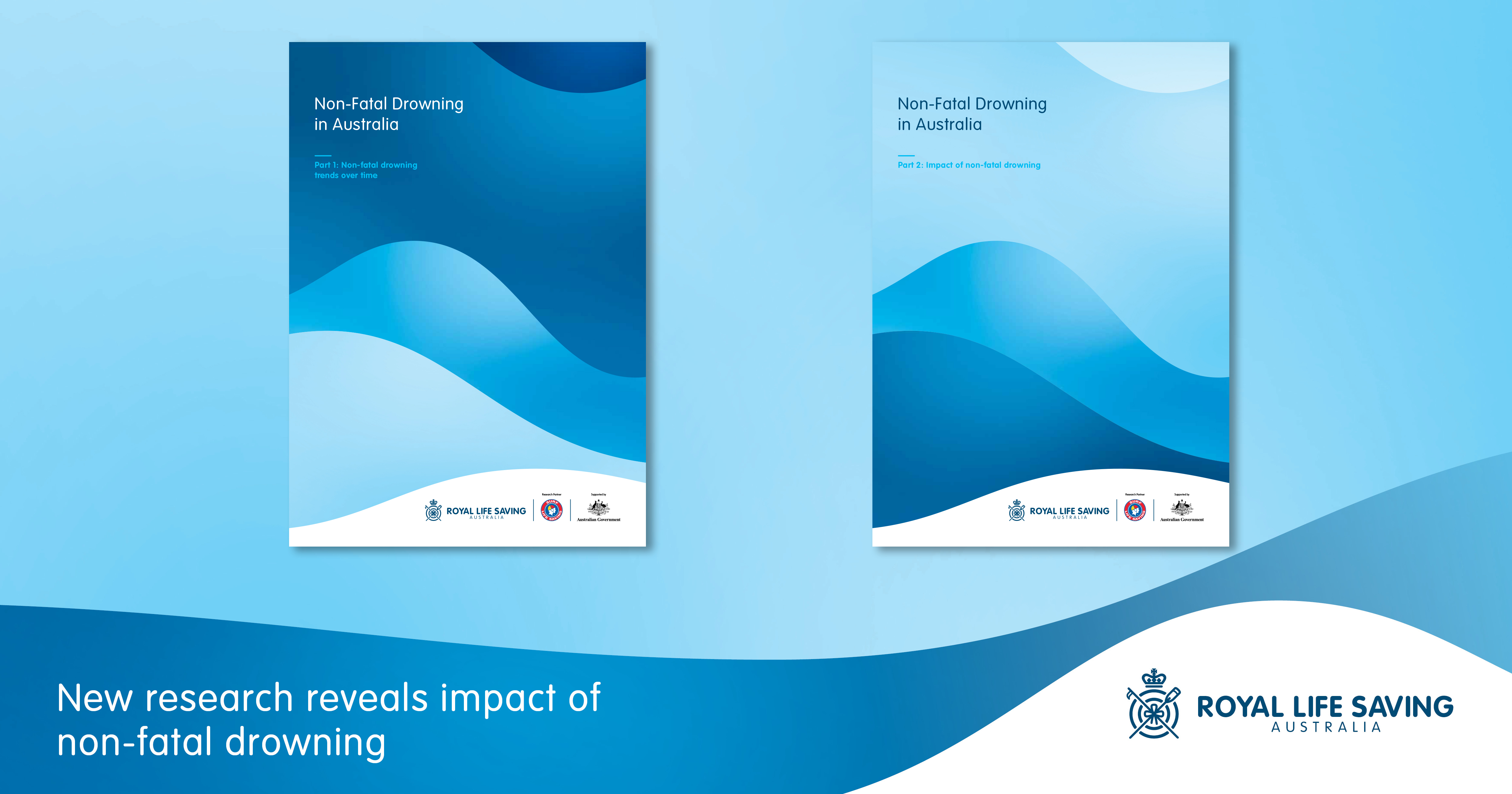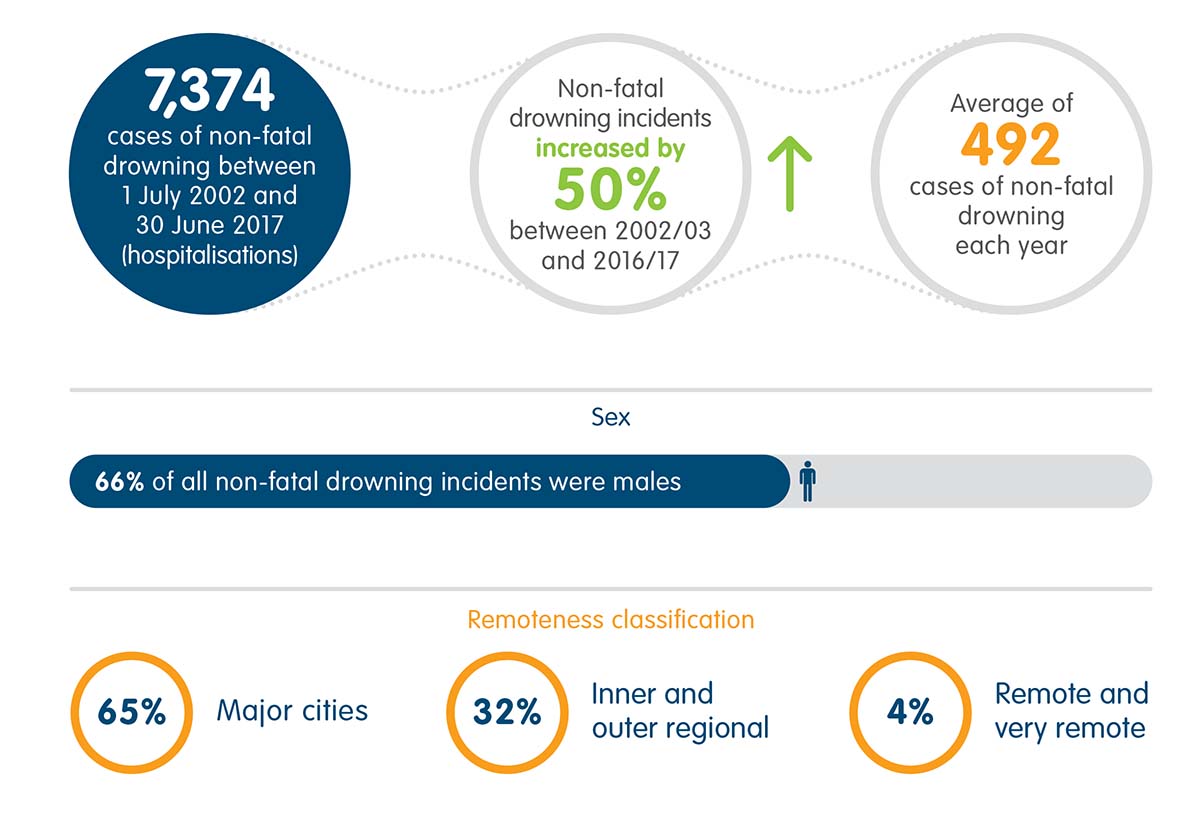Published 4th November 2021

Between 1 July 2002 and 30 June 2017 there were 7,374 cases of non-fatal drowning in Australia. This is an average of 492 cases of non-fatal drowning each year requiring hospitalisation.
For every fatal drowning, another three cases of non-fatal drowning are recorded. People who survive a drowning incident may experience long-term health complications or life-changing injuries. Tragically, non-fatal drowning impacts more individuals, families and communities every year. Between 2002/03 and 2016/17 (15 years), cases of non-fatal drowning increased by 50%.
Non-fatal drowning occurs among people of all ages and in all aquatic locations. Children aged 0-14 years account for 54% of non-fatal drowning incidents, followed by adults aged 25-54 years (22%). Over a third of incidents occur in swimming pools (35%) and 26% in natural water, including inland and coastal waterways. Almost two thirds of non-fatal drowning incidents occur in major cities (65%).
The average length of stay in hospital following a non-fatal drowning incident is 2.3 days, ranging from 1.5 days for children 0-4 years to 5.9 days for older adults aged 75 years and over. Pre-existing medical conditions are more common among older people, likely requiring more complex medical care and therefore, longer hospital stays.

On average, 65 cases of non-fatal drowning requiretime in an Intensive Care Unit (ICU) each year, with an average duration of stay of 69 hours (2.9 days). Some patients require Continuous Ventilatory Support (CVS). This refers to the use of a machine to assist breathing. On average, 50 cases of non-fatal drowning require time on CVS each year, with an average duration of 61 hours (2.5 days).
The Australian Water Safety Strategy 2030 encourages a continued focus on the full burden of drowning, with research and policy activities designed to further our understanding of non-fatal drowning and its impacts. Correct use of terminology among policymakers, researchers, journalists and the general public ensures the full burden of drowning is recognised. It should be noted that phrases such as ‘near-drowning’, ‘secondary drowning’ and ‘dry drowning’ are inappropriate and should not be used.
To prevent non-fatal drowning:
- Always supervise children around water
- Correctly install and regularly maintain a compliant pool fence and gate
- Be aware of limitations in skills and fitness
- Check conditions and hazards before entering the water
- Never swim alone
- Learn swimming and lifesaving skills, including CPR
Royal Life Saving is planning further research into the social impacts of non-fatal drowning to better understand how these incidents affect families and communities.
This study was supported by research partner, Surf Life Saving Australia and the Australian Government.
The full reports can be accessed here:
Non-Fatal Drowning in Australia. Part 1: Non-fatal drowning trends over time
Non-Fatal Drowning in Australia. Part 2: Impact of non-fatal drowning
